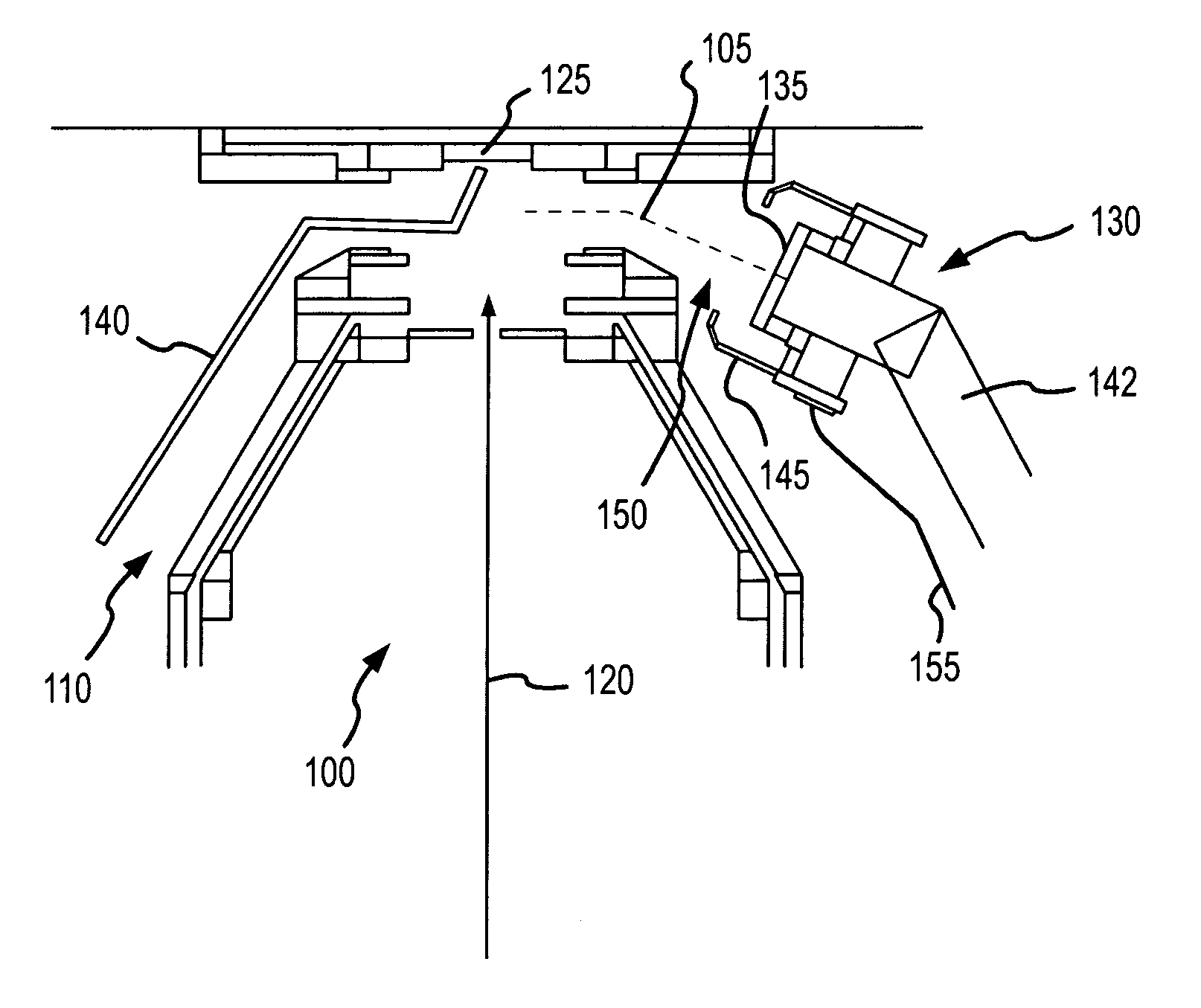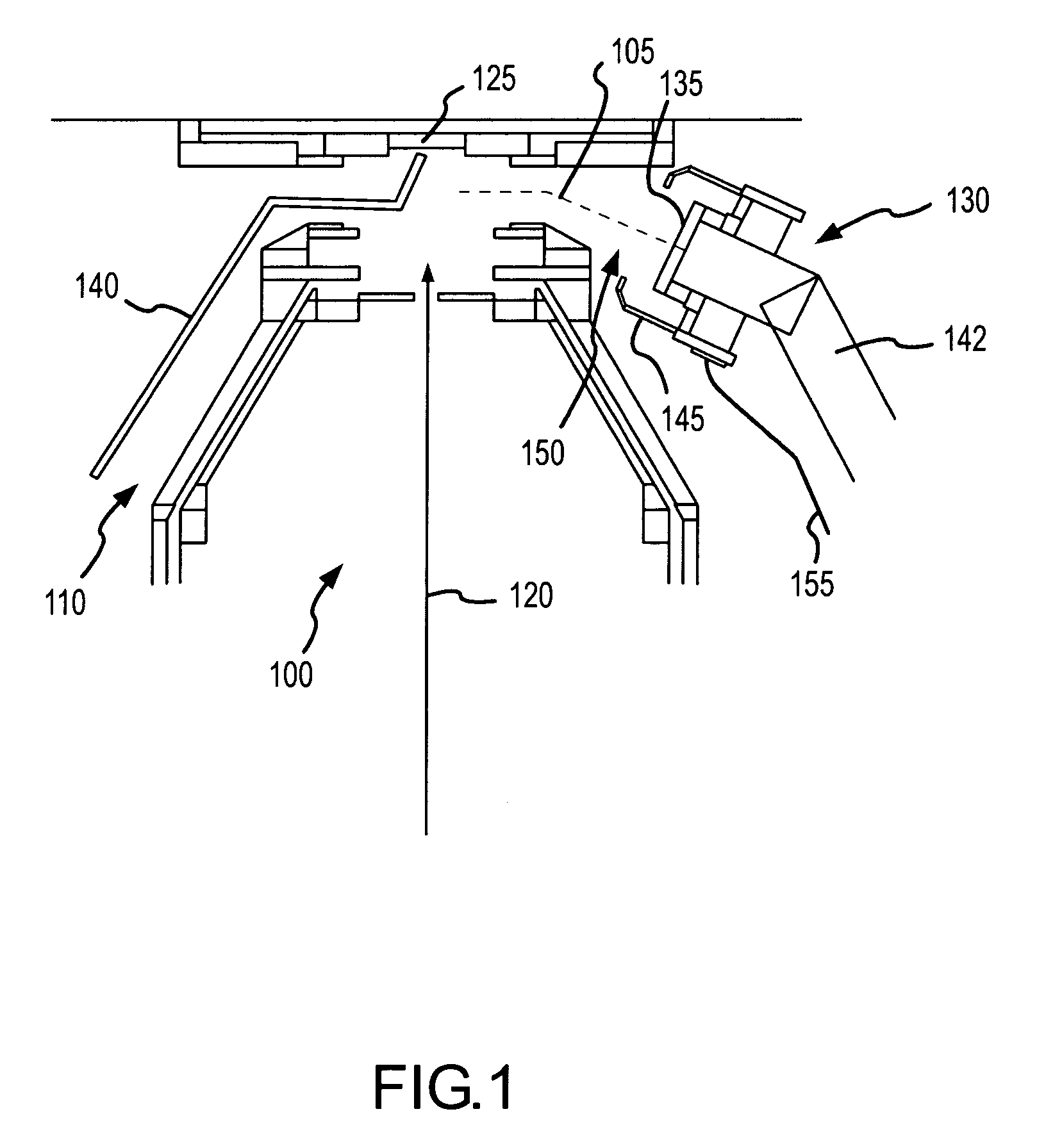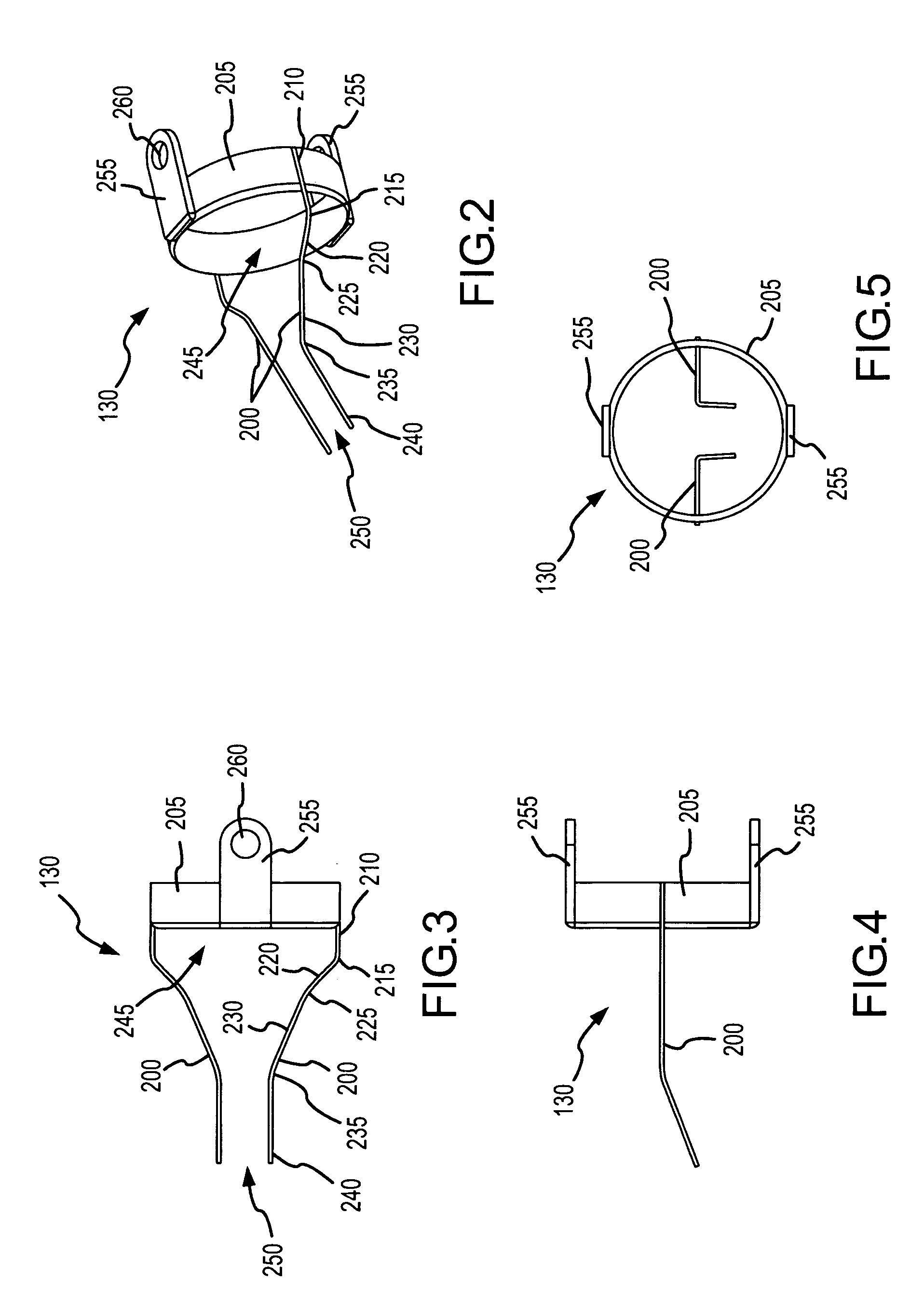Charged particle guide
a technology of charged particles and guide rods, applied in the field of charged particle guides, can solve the problems of increasing the difficulty of endpointing, increasing the difficulty of collection, and affecting the efficiency of secondary electron collection and its attendant image improvement, so as to enhance the generation of end pointing trace, reduce wear, and enhance image generation
- Summary
- Abstract
- Description
- Claims
- Application Information
AI Technical Summary
Benefits of technology
Problems solved by technology
Method used
Image
Examples
Embodiment Construction
[0038]One aspect of the present invention involves a charged particle guide that attracts and directs charged particles toward a charged particle detector, such as a scintillator disk of a secondary electron detector, and thereby improves its collection efficiency. The charged particle guide includes a plurality of members extending from the charged particle detector toward a sample. A bias voltage, or range of voltages, is applied to the members to introduce an electric field proximate the sample. When employed in a tool that generates a charged particle beam and directs the beam onto the sample, the electric field attracts charged particles emitted from the sample and directs the charged particles to the charged particle detector.
[0039]One particular configuration of the invention involves a charged particle guide coupled with a secondary electron detector of a FIB tool. The charged particle guide, in one particular configuration, includes a pair of wires extending from secondary ...
PUM
 Login to View More
Login to View More Abstract
Description
Claims
Application Information
 Login to View More
Login to View More - R&D
- Intellectual Property
- Life Sciences
- Materials
- Tech Scout
- Unparalleled Data Quality
- Higher Quality Content
- 60% Fewer Hallucinations
Browse by: Latest US Patents, China's latest patents, Technical Efficacy Thesaurus, Application Domain, Technology Topic, Popular Technical Reports.
© 2025 PatSnap. All rights reserved.Legal|Privacy policy|Modern Slavery Act Transparency Statement|Sitemap|About US| Contact US: help@patsnap.com



